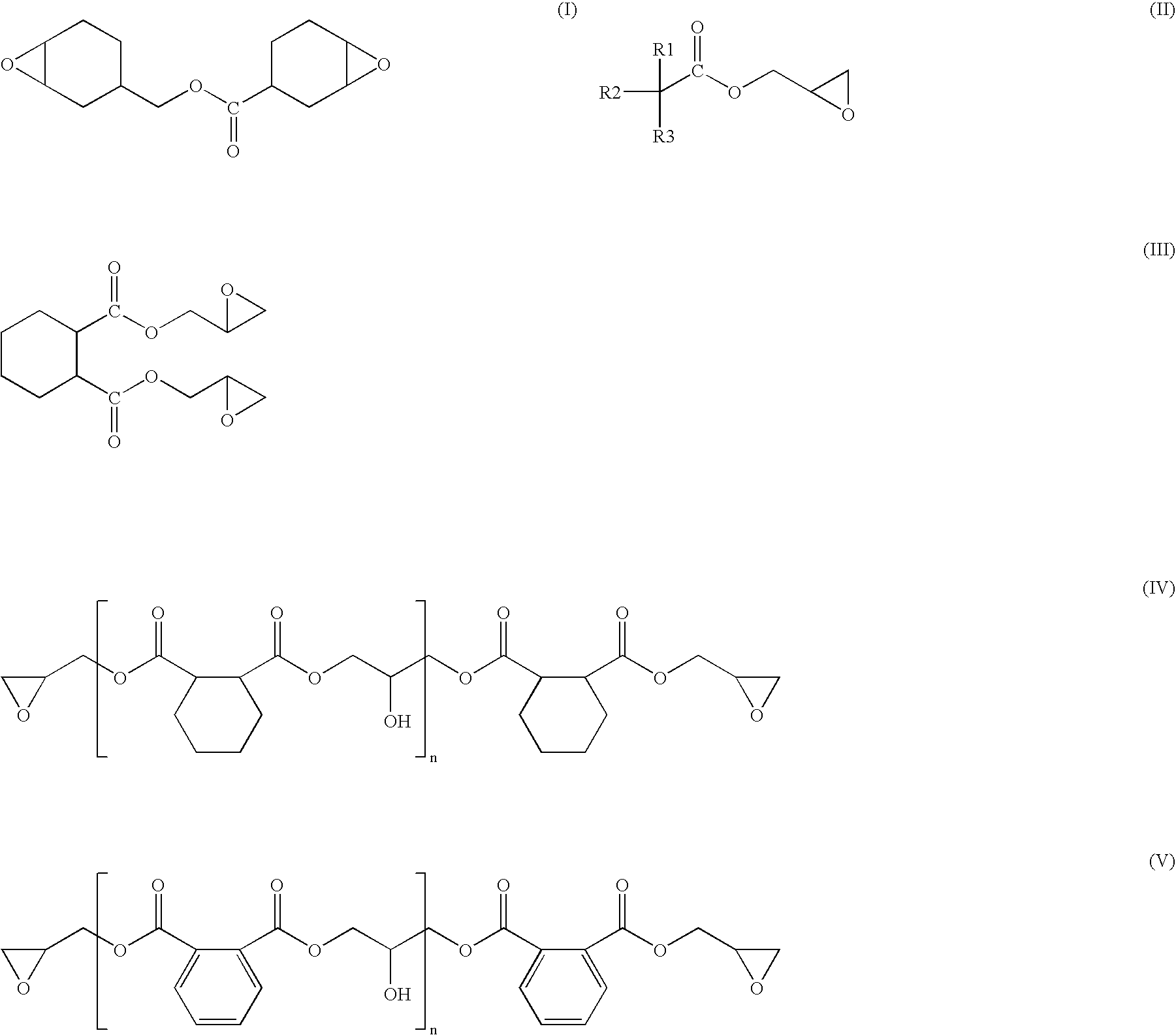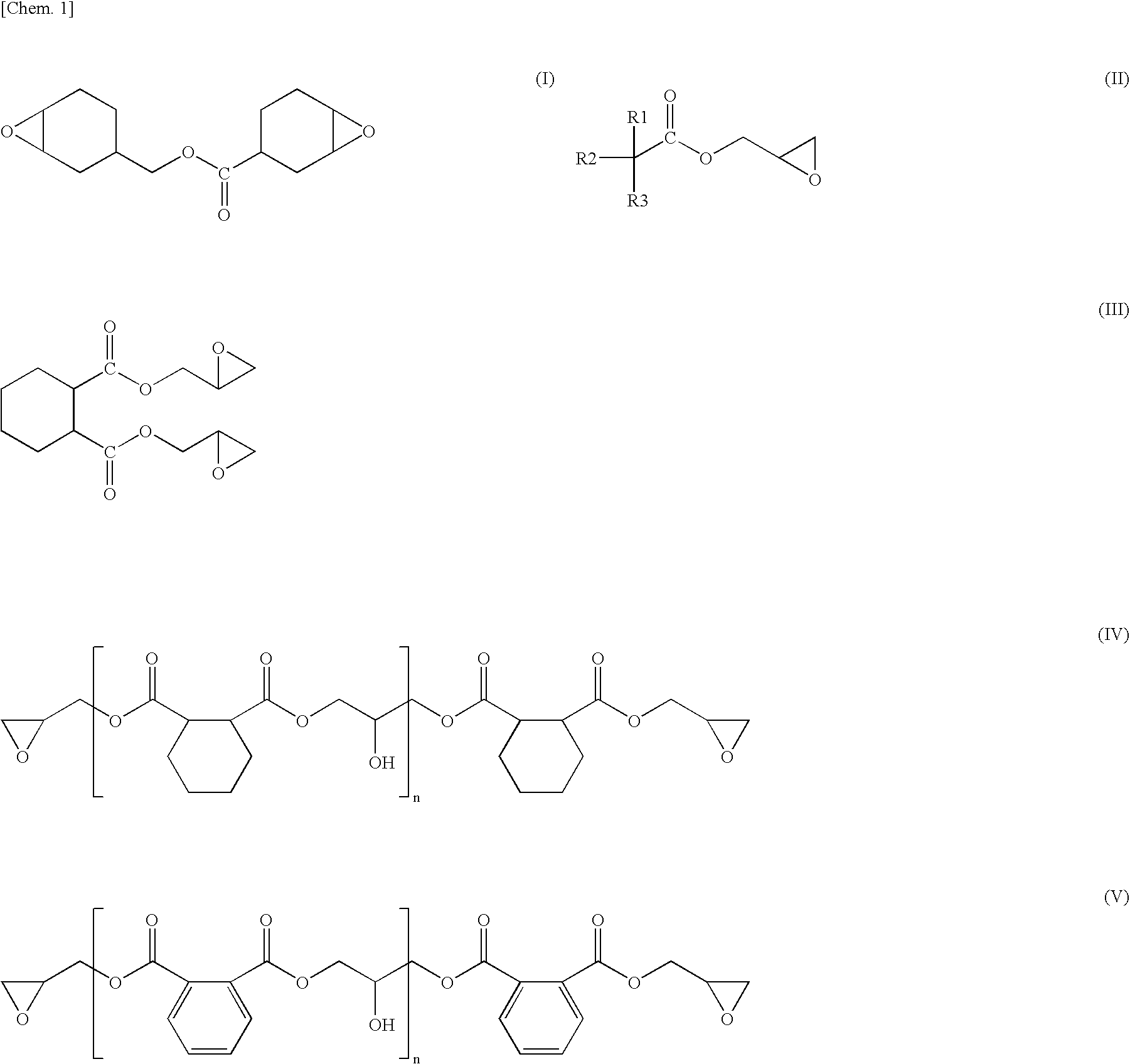However, it includes a problem that since it is a reaction at a low temperature, there is required a long time of period in the reaction, and since productivity is worse, and it lacks practicability.
However, all of the prior arts only describe that a thermal property such as a
melting point of a resin obtained are decided by raw materials to be employed,
reaction temperature, reaction time of period, and conditions for removing unreacted lactones, and all the prior arts do not describe a technical concept and a specific method for intentionally improving the thermal property by increasing the amount of the lactones to be introduced and by remaining the amount of the unreacted lactones.
The JP-A-02252729 Official Gazette describes a method in which there are dissolved a crystalline aromatic polyester and lactones at a lower temperature, and those have an effect for reducing
decomposition reaction by heating, however, there is small an effect for preventing a decline of a
melting point, further, occasionally, a reaction time of period unpreferably becomes long.
However, in
spite of an inherent low cost in the lactones, the method partially highly-polymerized in advance includes a problem of a fair adverse affection to total profitability.
However, even in the method, there are not shown a technical concept and a specific method, etc., that thermal properties are intentionally elevated by increasing the amount of the lactones and by remaining the amount of unreacted lactones.
As described hereinabove, those have been still insufficient as a method for the preparation of a polyester block copolymer having a high melting point and a high molecular weight.
I, an industrially-produced
polymer is not sufficient in heat resistance and hydrolysis resistance, and, in the case that it is applied to a melting molding method such as a
blow molding and
extrusion molding in which a high
melt viscosity is required, there has been caused a problem that moldability is worse.
However, in the method for increasing a
melt viscosity proposed herein, there is required a very long time of period for heating and, further, hydrolysis resistance is not improved at all.
By the method, although heat resistance and hydrolysis resistance are elevated, the hydrolysis resistance is not sufficient, an elevation of a melt
viscosity is also insufficient.
In order to allow to become sufficient the hydrolysis resistance of the polyester
elastomer obtained by the method, it is required that an excessive amount of the epoxy compounds are added, resulting in that a melting point lowers, and
viscosity change is large in reheating, and it is problematic in molding stability in the case of conducting a more precise molding process.
However, melt
viscosity in resins obtained herein is not still sufficient and, it is anxious that such the addition of the
metal salts unpreferably affects to hydrolysis resistance, and it preferably causes to lower a color
hue.
In the method, since there are added the carboxylic acids which change hydrolysis resistance to worse, there must be added a large amount of the epoxy compounds in order to obtain a sufficient hydrolysis resistance, resulting in that there are caused a cost increase and
crystallinity lowers.
The heater wire composed of the composite materials are often exposed to heat cycles in view of functions thereof and, if the heat-sensitive body 4 is poor in heat resistance, even though exotherm from the heater wire 3 is in a
normal range, the heater circuit is occasionally
cut or, contrarily, a fusing function does not occasionally work even in the case of abnormal
temperature elevation, resulting in that
fire accident is occasionally caused.
As the resins, although there is employed a resin which is excellent in heat resistance and does not contain an additive, or a resin composition in which a
hindered phenol-based stabilizer is mixed to prevent heat deterioration, those include many problems.
Although the polyester block copolymers obtained by the methods have excellent rubbery elasticity and excellent weatherability, the copolymers are insufficient in heat resistance, and include a drawback that viscosity, extension, and strength remarkably lower by exposing to a high temperature for a long time of period.
Further, the copolymers do not have a strain-hardening property which is an important property in blow-molding, and there cannot be obtained a molded article having uniform thickness.
However, melt viscosity is relatively low in the compositions obtained in the methods.
There have been problems that because it is difficult to obtain a mutual relationship between a dependence of a melt viscosity upon extension speed and a mixing amount of the metal salt of an aliphatic
carboxylic acid, and quality cannot be stabilized, and heat resistance lowers, etc.
Accordingly, a larger hardening property prevents an excessive extension of an extended portion in
blow molding owing to a larger viscosity, and an unextended portion is extended owing to a lower viscosity, as a result, uniform thickness is obtained.) is still insufficient. and there cannot be obtained a molded article having uniform thickness in
blow molding and, further, there has been a problem that discoloration is remarkable.
In the case that the crystalline aromatic polyester (A1) exceeds the upper limit of the use proportion, physical properties as a noncrystallinity or low
crystallinity resin are insufficient in a polyester block copolymer (P1) obtained and, contrarily, in the case that it is less than the
lower limit of the use proportion, flexibility is unpreferably insufficient as an
elastomer resin.
In the case of less than 0.5% by weight,
reaction rate becomes remarkably low, resulting in that practicability is lost.
On the other hand, in the case that the unreacted lactones exceeds 0.5, the amount is particularly limited, volatile components increase in the case that the polyester block copolymer (P1) is molded into
pellets, resulting in that a working circumstance becomes worse and it becomes difficult to remove the unreacted lactones.
However, in the case that it does not dissolve in the lactones (B) at a temperature being less than the melting point, since a
decomposition reaction, etc. of the crystalline aromatic polyester (A1) proceed by heating depending upon the temperature, resulting in that there become worse physical properties in the polyester block copolymer (P1) obtained.
In the case that the temperature in melt-mixing is higher,
decomposition reaction is thermally accelerated, whereby, resulting in that heat resistance, hydrolysis resistance, and color
hue become worse.
In the case that the temperature for thermally-treating is not less than a melting point of the composition (R), a trouble by melting resins is caused in handling, and a
thermal decomposition reaction is further accelerated.
In the case that the ratio of the lactones (B) is smaller than the range, flexibility of the polyester block copolymer does not manifest, resulting in that it is not appropriate for a heat-sensitive body and, in the case that it is larger than the range, heat resistance lowers in the polyester block copolymer.
Further, in the case that the formulating amount exceeds 5.0 parts by weight, molding processability occasionally becomes worse by an influence of the unreacted epoxy compound in the composition (Q), and there is shown a tendency that
surface conditions becomes coarse in a molded article prepared.
Further, in the case that the formulating amount exceeds 3.0 parts by weight, it is not economical and, in the composition (Q) which comes into contact with a metal, dispersion possibly becomes worse, unpreferably resulting in that heat resistance contrarily lowers.
In the case that addition amount of the multifunctional compound (D) is less than 0.1% by mol, dependence of melt viscosity upon extension rate is insufficient, resulting in that there cannot be obtained a molded article having a uniform thickness in blow molding and, in the case that it is larger than 100% by mol, decline of melting point is remarkable in an
esterification reaction, and only identical or lower heat resistance is obtained to or than inherent heat resistance in the polyester block copolymer (P3).
In the case that the formulating amount exceeds 5.0 parts by weight, molding processability occasionally becomes worse by an influence of the unreacted epoxy compound, and there is shown a tendency that
surface conditions become coarse in a molded article prepared.
If it is not formulated, there is occasionally observed a slight decline of melt viscosity during a reaction of the epoxy compound (C), and dependence of melt viscosity upon extension rate is insufficient by an influence of an TMP amount, resulting in that there is occasionally obtained a polyester block copolymer composition which is not appropriate for blow molding.
On the other hand, in the case that it is formulated in exceeding 2.0 parts by weight, discoloration becomes remarkable, and
crystallinity lowers in the polyester block copolymer, resulting in that heat resistance ends to lower.
In the case, in the case that the addition amount of the multifunctional compound (D) is less than 0.1% by mol, modulus of strain hardening is insufficient, resulting in that there is not obtained a molded article having uniform thickness in blow molding and, in the case of exceeding 200% by mol, a decline of a melting point is remarkable in a
transesterification reaction, resulting in that there is not occasionally obtained only a molded article having an identical or less heat resistance inherently possessed in a polyester block copolymer.
In the case, in the case that the addition amount of the multifunctional compound (D) is less than 0.1% by mol, modulus of strain hardening is insufficient, resulting in that there is not obtained a molded article having uniform thickness in blow molding and, in the case of exceeding 150% by mol, a decline of a melting point is remarkable in a
transesterification reaction, resulting in that there is not occasionally obtained only a molded article having an identical or less heat resistance inherently possessed in a polyester block copolymer.
Contrarily, in the case that the modulus of strain hardening is insufficient, the above-described effect does not manifest in blow molding, and it tends to become difficult to obtain a molded article having a uniform thickness.
In the case that the formulation amount exceeds 5 parts by weight, there is a tendency that molding processability occasionally becomes worse by an influence of the unreacted epoxy compound, or
surface conditions becomes coarse in a molded article.
In the case that the addition amount of the multifunctional compound is less than 0.1% by mol, the modulus of strain hardening is insufficient, resulting in that there is not obtained a molded article having uniform thickness in blow molding and, in the case of exceeding 150% by mol, a decline of a melting point is remarkable in a
transesterification reaction, resulting in that there is not occasionally obtained only a molded article having an identical or less heat resistance inherently possessed in a polyester block copolymer.
In the case that the addition amount of the multifunctional compound is less than 0.1% by mol, the modulus of strain hardening is insufficient, resulting in that there is not obtained a molded article having uniform thickness in blow molding and, in the case of exceeding 200% by mol, a decline of a melting point is remarkable in a
transesterification reaction, resulting in that there is not occasionally obtained only a molded article having an identical or less heat resistance inherently possessed in a polyester block copolymer.
In the case that the formulation amount exceeds 5.0 parts by weight, there is a tendency that molding processability occasionally becomes worse by an influence of the unreacted epoxy compound, or surface conditions becomes coarse in a molded article.
In the case that the temperature in melt-mixing is higher, decomposition reaction is thermally accelerated, whereby, resulting in that heat resistance, hydrolysis resistance, and color hue become worse.
In the case that the temperature in melt-mixing is lower, dispersion conditions of the epoxy compound become worse.
Also, it has a characteristic that production of flashes in molding is exceedingly slight.
 Login to View More
Login to View More 


